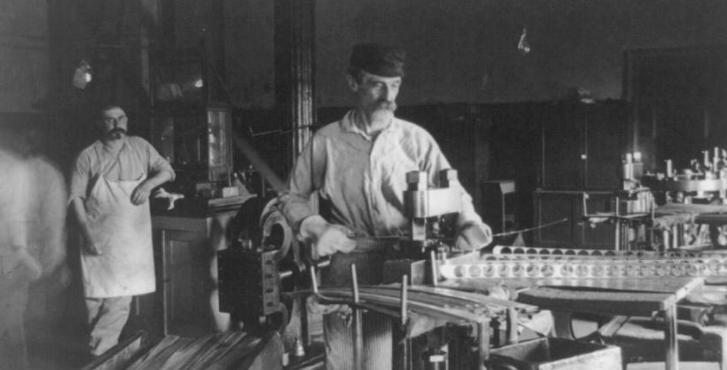
SHREVEPORT, La. (KTAL/KMSS) — A state representative will introduce a bill before the Louisiana Legislature that could establish gold and silver as the state’s currency.
Generations have passed since legal tender was last created in the state of Louisiana, but Representative Raymond Crews, a pro-gun, pro-life, combat veteran Republican from District 8, is submitting HB 714 for consideration. If passed, the bill will once again establish gold and silver as currency in the state.
Prior to its closure, the U.S. Mint in New Orleans stamped more than 427 million gold and silver coins. The last time it minted coins was in 1909.
But at least three nations have circulated coins across the lands we now know as Louisiana.
“Before the Civil War began, the Federal Government did not issue currency. It only issued coins,” Rich Self of American Coin in Shreveport told KTAL NBC 6. “Currency, which was prevalent, was privately issued by banks, businesses, local merchants, etc… all through the country.”
Self said when the Civil War began, Lincoln saw the need for the government to control the country financially.
“During the Civil War, most of the southern States continued to issue much of their own money, including Louisiana,” said Self. “The majority of parishes also issued their own money, and so did many of the towns and cities. Even Shreveport issued money.”
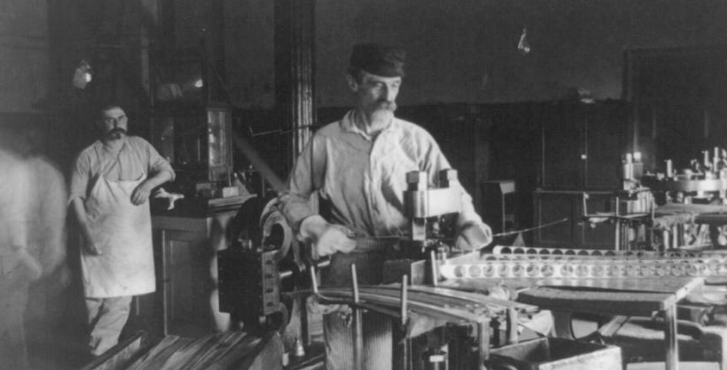
Self said there are advantages to the idea of Louisiana using gold and silver currency.
“Gold has been around for thousands of years and is a benchmark of value, if you will,” said Self. “I don’t think it’s going anywhere anytime soon. There’s perceived value in gold, as opposed to the money we use today, which undergoes inflation. Our money buys a little less every day, so some people find comfort in something that is backed beyond faith—such as precious metals.”
But Self can also see a major disadvantage of using gold and silver as specie in Louisiana.
“There is a potential and possibility for fraud,” he said. “I’ve seen more counterfeit silver and gold coins and bars in the past five years than I did in the previous 30 years. The price of gold fluctuates, too. But so does the value of the dollar.”
The proposed bill would prohibit gold and silver-backed transactions that involve foreign nations or enemies of the state and could give the state treasurer the right to issue specie (coinage) and establish a currency ‘as determined practicable.’
The act could also allow the state treasurer to issue specie in Louisiana.
As it is written, the bill will provide criteria for valuing currency and allow the treasurer to establish fees for issuing and depositing gold and silver Louisiana currency.
How long has it been since Louisiana has had its own currency? A hot minute–that’s how long.
Here’s a brief history of Louisiana’s former currencies.
Spanish currency
Have you ever read the Times-Picayune? If so, you were given a clue about Spanish money that once circulated in Louisiana.
The Picayune was a Spanish coin worth one-sixteenth of a dollar. The name Picayune comes from the French word picallion, which was a copper coin from Savoy.
Something that was called picayune was considered to be of little value.
Spanish currency was used in Spanish territories across the colonial United States and was so popular that Spanish monies were made legal tender in the United States in 1793. They remained legal tender until 1857, just before the Civil War.
An equivalent of the Spanish Picayune in American society today is the nickel.
French currency
French coins were ever minted specifically for Louisiana, but the French “douzaine” hammered coins, made of a silver and copper alloy, were issued by feudal lords. Older coins could be counter-stamped and were stricken with the image of a fleur-de-lis inside of a beaded oval. These fleur-de-lis coins were sent to French colonies for circulation.
Louisiana was one of those French colonies.
By the early 1700s, millions of coins were struck for the French colonies. They were called Mousquetaires because they looked like the cross worn by the musketeers, the name given to the king’s bodyguards. In the 1720s, millions of French coins were made from precious metals such as copper.
American currency and the meaning of “Dixieland”
After the Louisiana Purchase, which transferred ownership of an enormous section of North America from France to the United States, the state of Louisiana frequently created its own currency. The word “Dixieland” actually comes from a time period when Louisiana had its own banknotes.
Called “Dix notes” after the French word that means ten (dix), “Dix notes” were printed by Citizens Bank of Louisiana in New Orleans until the notes were discontinued in 1860 after the Civil War broke out.
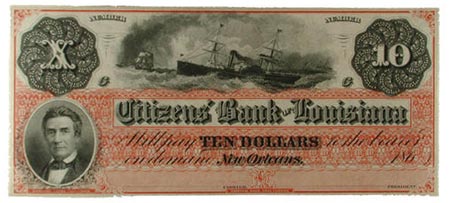
Because men on boats who made their way down the Mississippi River to trade in New Orleans often returned home with “Dix notes” in their pockets, eventually all of the land south of the Ohio River became known as “Dixieland.” The notes could be exchanged for gold or silver almost anywhere in the country.
But taking Louisiana money out of state was controversial in the mid-19th century, according to this unnamed author who printed the following in the Jul. 12, 1849, New Orleans Crescent:
“Have we not delightful places of resort surrounding this great emporium, and sufficient to supply the luxurious wants of the wealthy, without flooding Saratoga with Louisiana currency? The funds are justly due here—spend your surplus at our watering places, and ere many days it will return; but throw it into the Falls of Niagara or the Hudson River, and it is swept from us without a hope of seeing it again.”
Ironically, money from Louisiana was easily traded in much of the country. However, currency from other states was not always accepted in Louisiana.
“…a person could not purchase a dinner in market with a pocket full of one or two dollar notes of distant banks. The bank note currency of Louisiana, with the banking system adopted, is now the admiration of the financial world…,” stated The New Orleans Crescent on Mar. 22, 1859.
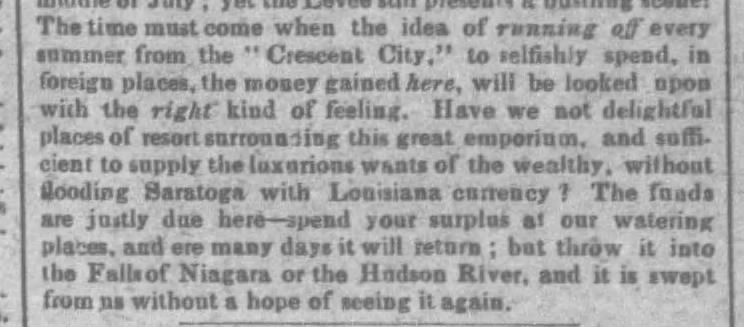
During the Civil War, southern states resorted to printing their own Confederate currency. Such currency was printed in New Orleans at times, and after New Orleans fell to the Union the Confederacy began to print more money without tying the value of their paper notes to resources in the treasury. This caused inflation to become widespread in the South.
Now we understand that printing money without gold and silver to back the notes can destabilize the currency’s value. For example, destabilization became a very serious problem for $100 notes printed in Shreveport in 1863.
Pictured on the $100 currency from Shreveport is Thomas Overton Moore, a Confederate governor of Louisiana. The building featured on the note was the proposed design for a new Louisiana state capital building in Shreveport. It was to be built on the grounds where the Federal Courthouse sits in Shreveport today.
If you’re wondering why a design was proposed for a new capital building in Shreveport, it might help to understand that Shreveport was the capital of the Confederacy beginning in 1862.
And here’s an interesting fact: Self said that currency produced by the City of Shreveport in the 19th century is still eligible for redemption in Shreveport.
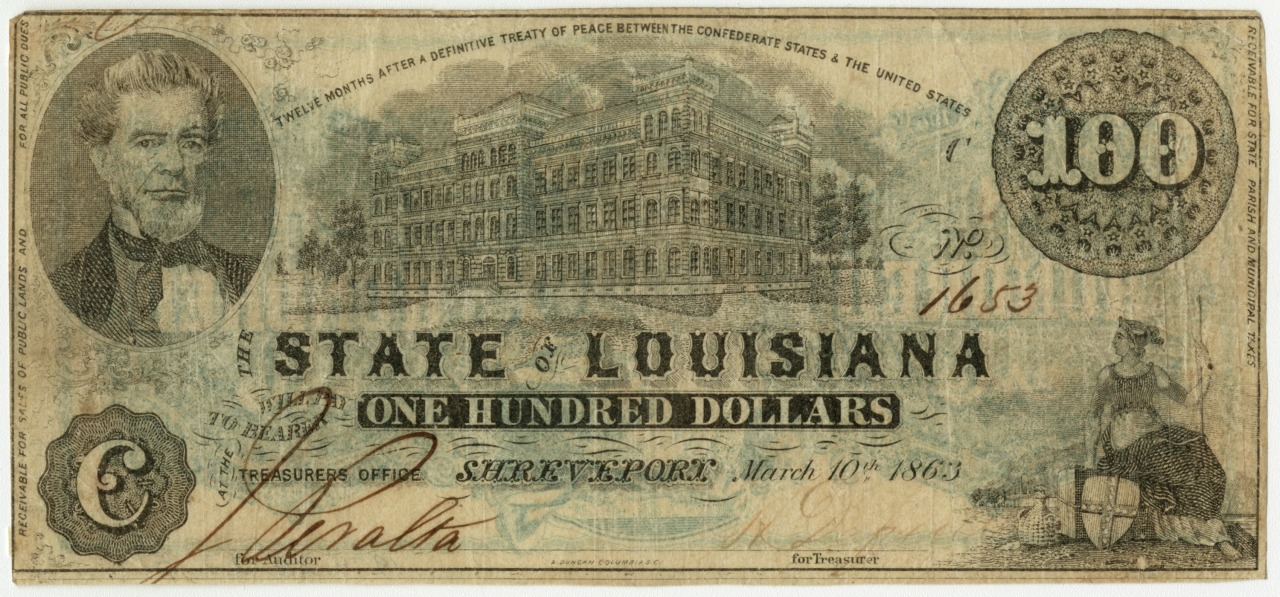
“They’ve never been disavowed,” Self said of old currency printed by the city of Shreveport. “But the collector value is more than the face value of the note, so you would not want to use them for money.”
Self also said the Federal government never deemed currencies to be illegal.
“They just taxed other currencies out of existence,” he told KTAL. “They could no longer be used to pay taxes, and that limited its ability to be used.”
Self also said that as time passed, people became leery of most currencies the banks and companies created. Eventually, the tradition faded from most memories.
American currency is no longer backed by gold and silver. Today, our faith in currency keeps the U.S. dollar in circulation.
History of federal money
From 1863 until 1929, the U.S. government (under the National Bank Acts of 1863 and 1864) allowed thousands of banks to issue their own banknotes. These banknotes had a basic design and were printed on a specific type of paper authorized by the federal government.
Then Congress passed the Federal Reserve Act in 1913, and the nation’s Federal Reserve System was authorized, allowing Federal Reserve Banks to issue Federal Reserve Bank notes.
These notes are the only currency still manufactured today by the Bureau of Engraving and Printing.
Self said that American Coin has examples of the historic coins that were once used in Louisiana.
He insists that obsolete currency tells the story of our past.
“Coins tell our story,” Self told KTAL. “These are firsthand historic documents and items that need to, and should be, preserved.”
Will Louisiana’s House of Representatives pass legislation to establish gold and silver as the state’s currency? We’ll have to wait a bit to find out. The next legislative session begins on March 4.
KTAL/KMSS reached out to Louisiana State Representative Raymond Crews of District 8 but was unable to schedule an interview before publishing this article.



